The Canadian Hockey League (CHL) has produced more talent than any other developmental league, representing 52 percent of NHL rosters on opening night this season. This should come as no surprise as the CHL annually has the most players selected in the draft, including 41 percent of the 217 picks in 2017. However, since the 2013 draft, when 48 percent of the 211 selections were from the CHL, the percentage of players has dropped or stayed stagnant.
Of course, even with the slight decline in drafted players, the CHL continues to produce elite talent and, going back to 1990, only six of the first overall picks developed in a different league. Furthermore, when CHL players reach the NHL they tend to have an immediate impact: 13 alumni have won the Calder Trophy since 1990 including eight consecutive winners from 2008 to 2015.
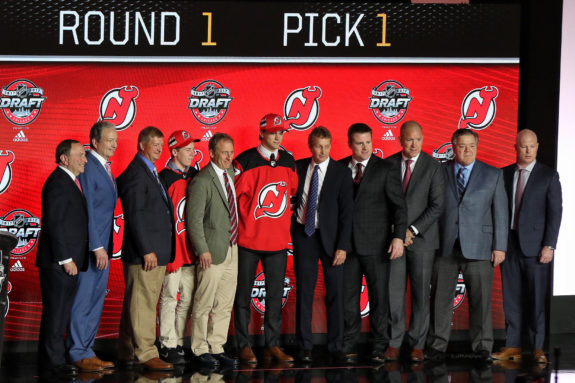
What I am interested in are the players who didn’t win the Calder Trophy but still had an immediate impact in the NHL. The goal is to understand how players from different leagues transition to the NHL and determine which leagues are best at preparing players for it.
To do so, I looked at the top 10 picks from the 2007 to 2016 drafts to evaluate 100 prospects. To determine how players transitioned to the NHL, I used a player’s point-per-game (PPG) rate in his first season with at least 25 games played, after which a player loses rookie eligibility. For junior scoring, I used a player’s PPG rate over the course of his career in juniors, using the league from which he was drafted.
I then calculated the difference between NHL and junior PPG rates to find the difference and measured the percentage of change between the different levels of competition. This made it easy to compare leagues.
Who is Developing Successful Rookies?
While the CHL may produce the most prospects and even the most elite prospects, its graduates are not necessarily the best at transitioning in their first NHL season. That title belongs to European leagues, especially the Swedish Hockey League (SHL), Allsvenskan, and Liiga.
The SHL, Sweden’s top tier, has produced some great NHL talent since the 2007 draft, including Victor Hedman, Mika Zibanejad, and William Nylander. As a league, top 10 picks from the SHL averaged .38 PPG while in Sweden and .34 PPG in their rookie seasons. Their forwards have transitioned well, especially Zibanejad, whose PPG increased from .42 to .48 when he joined the Ottawa Senators.
SHL defensemen have made the best transition, including Jonas Brodin who experienced an 85 percent growth in PPG between levels of play. As a group, Brodin, Hedman, and Adam Larsson had a combined decrease of .02 PPG between the leagues. This was the smallest drop off of any league’s position group with at least two players.
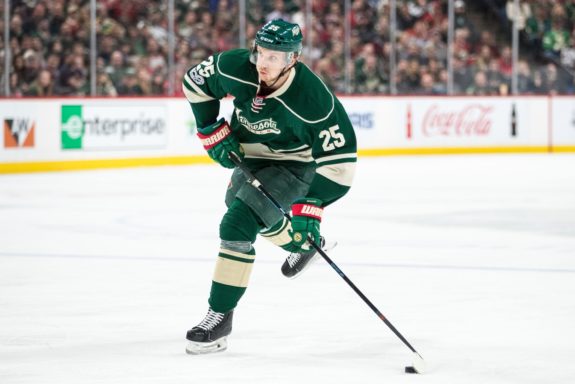
Sweden’s second tier league, Allsvenskan, has had two high-quality defensemen selected in the top 10 of the draft, Oliver Ekman-Larsson and Hampus Lindholm. Ekman-Larsson produced at .54 PPG while playing for Leksands IF and averaged .23 PPG in his rookie season with the Phoenix (Arizona) Coyotes. Lindholm’s transition is a marvel. He had a .20 PPG rate for Rogle BK that nearly doubled at .38 PPG with the Anaheim Ducks. That is an increase of 90 percent.
Lastly, Liiga is Finland’s top hockey league. Many of the most talented Finns in the NHL come from the league, including Mikael Granlund, Aleksander Barkov, and Patrik Laine. Six alumni were selected in the top 10 since 2007, including the three mentioned above. As a league, drafted players had a decrease of .17 PPG. Meanwhile, right winger Laine increased his scoring rate in his rookie season with a growth of .23 PPG, or 35 percent.
A reason for this ease of transition is the quality of competition in Sweden and Finland. Both the SHL and Liiga are the top professional leagues in their countries and there are former NHLers in both. Both leagues have an average age of 25 so draft-eligible and already-drafted prospects face off against grown men accustomed to playing at the highest level. Compare the average age of the SHL and Liiga to North America, where the maximum age in junior is 21, and it is understandable why players from the SHL and Liiga transition easier than others.
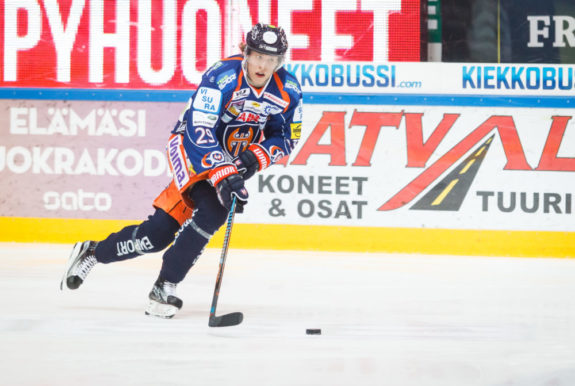
Additionally, scoring is down in these leagues compared to other developmental leagues. None of the players selected from Liiga, Allsvenskan, or the SHL averaged more than a point per game during their junior careers. They also haven’t had an alumnus reach that average during his rookie season. But it is the difference between the players’ junior scoring rates and their rookie rates that makes these leagues successful at producing players who can transition well.
Leagues with Less Success
Of the 100 players selected, 63 of the draftees played their junior hockey in the CHL which is in line with the 52 percent of NHL rosters that are comprised of CHL alumni. The downside to the volume of players is that there are more instances of those who struggle to transition to the NHL. Of the 63 players, six have yet to lose their rookie status in the NHL, the most of any league in that span.
Two players, Olli Juolevi and Alex Nylander, were drafted just two years ago and are still considered prospects with high upside. Other than those players, the remaining four are either retired or have very little chance to be an impact player in the NHL.
In the CHL, 46 of the 63 players averaged at least a point-per-game during their careers. After reaching the NHL, only one player maintained that average in his rookie season, Connor McDavid. In total, CHL alumni averaged 1.14 PPG in juniors and .39 PPG in their rookie seasons.
The Quebec Major Junior Hockey League (QMJHL) alumni had the largest drop off between junior and the NHL at .99 PPG, or 67 percent. The OHL followed with a .72 PPG decrease, or 59 percent. The Western Hockey League (WHL) had the smallest decline at .57 PPG, or 45 percent.
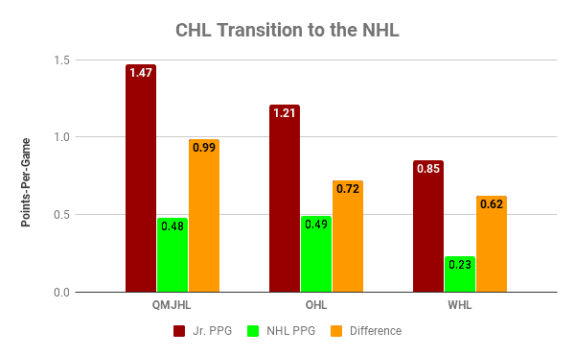
One reason for these findings is the high rate of scoring in the CHL compared to other developmental leagues. The QMJHL had the highest junior scoring rate, with no player scoring less than a point-per-game. Once they faced stiffer competition in the NHL and played against men for the first time, the learning curve proved substantial.
Interesting Outliers
Typically, players had a decline in scoring between 45 and 70 percent after reaching the NHL, while the average of all leagues was a decrease of 31.40 percent. However, there were some players who didn’t fit the range and affected the average. Swiss-born Nino Niederreiter regressed from 1.08 PPG in the WHL to .02 PPG with the New York Islanders during the 2011-12 season. This represents a drop off of 98 percent and is a major reason why the Islanders traded him to the Minnesota Wild.
On the other end of the spectrum was Mikko Rantanen of Liiga. While playing for TPS, he averaged .37 PPG but in his rookie season with the Colorado Avalanche his average jumped to .51 PPG. That was an increase of 38 percent, highest of all forwards.
What Do the Numbers Mean?
In an average draft, the CHL will produce the majority and best prospects. They will also, most likely, have developed the first overall pick and the Calder Trophy winner in any given year. However, outside of those players, European leagues have developed and continue to develop the prospects who most easily transition to the NHL game.
Even in the upcoming draft, defenseman Rasmus Dahlin is the top prospect and likely to be drafted first overall. He plays for Frolunda of the SHL and will likely play in the NHL next season. I expect that he will transition smoothly given the quality of competition he has already faced in Sweden and based on what the data shows.
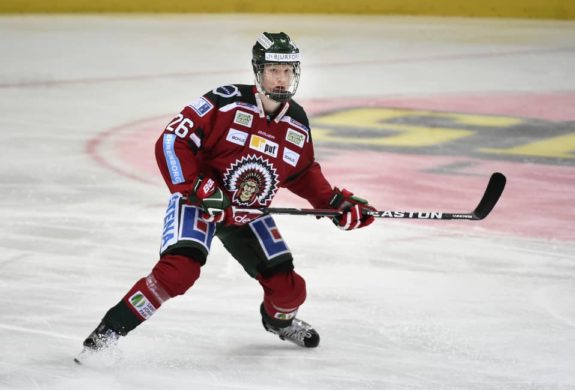
Of course, for the purposes of this study I only considered the top 10 picks in order to keep the data manageable. If I had expanded the parameters to include the entire first round or opened it up to more drafts, the findings could have been different. But, the goal was to predict rookie success before the 2018-19 season starts. Knowing the drop off or growth in scoring rate percentage for a position or from a specific league can help estimate a player’s transition between leagues. I plan to work more with the data to predict rookie success for next season.
As always, I appreciate any comments and enjoy having dialogue about my findings.
*All stats came from HockeyDB, Elite Prospects, and Quant Hockey